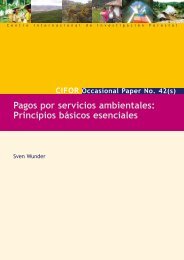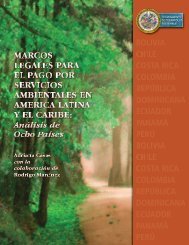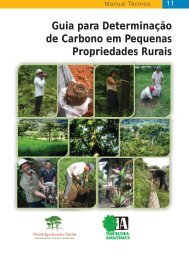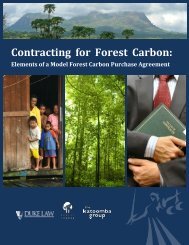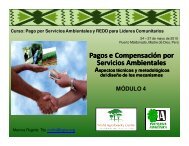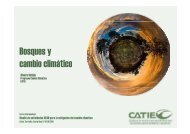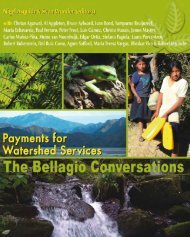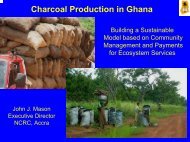Guide on Climate Change and Indigenous Peoples
Guide on Climate Change and Indigenous Peoples
Guide on Climate Change and Indigenous Peoples
- No tags were found...
Create successful ePaper yourself
Turn your PDF publications into a flip-book with our unique Google optimized e-Paper software.
dengue fever, because of increasing temperatures <strong>and</strong> deforestati<strong>on</strong>.Warmer forests are favorable habitats for mosquitoes acting as vectors.New diseases such as meningitis, which were not endemic <strong>and</strong>widespread, emerged in Ghana <strong>and</strong>other tropical countries.• Increased floods in low lying1°C - change in temperature whichareas because of deforestati<strong>on</strong>can already lead to significanthas led people in those areas tochanges in forest growth, modifyingevacuate or adopt their lifestyles tothe functi<strong>on</strong>ing, fertility of soilsc<strong>on</strong>stant flooding.<strong>and</strong> compositi<strong>on</strong> of forests.Semi-arid <strong>and</strong>Arid L<strong>and</strong>sMost of the inhabitants of semi-arid <strong>and</strong> arid l<strong>and</strong>s are pastoralists, hunters<strong>and</strong> gatherers, settled agriculturists, <strong>and</strong> many of them self-identify asindigenous peoples. These peoples have very sophisticated traditi<strong>on</strong>alknowledge in maintaining crops <strong>and</strong> forages, nurturing livestock <strong>and</strong> makingthe arid, semi-arid, humid, hyper-humid l<strong>and</strong>s productive.• Much less rainfall <strong>and</strong> prol<strong>on</strong>ged droughts, resulting in moreoccurrences of dust storms that degrades grassl<strong>and</strong>s, damages seedlings<strong>and</strong> other crops, decreases livestock of pastoralists <strong>and</strong> nomadicindigenous peoples leading to chr<strong>on</strong>ic hunger <strong>and</strong> food insecurity.• Deserts are becoming hotter <strong>and</strong> drier which will cause thedisappearance of organisms <strong>and</strong> plants that have reached their heattolerancelimits.• Drying up of water sources(springs, streams), decreased flowin rivers, shrinking of lakes, poorreplenishment of water aquifers,are affecting indigenous peoples’access to water, water for crops<strong>and</strong> livestock, habitats for birds<strong>and</strong> water creatures <strong>and</strong> thuslessening sources of food forpeople.• The capacity of indigenouspeoples to dig deeper into the ground for fresh water is very limitedbecause of poverty. Lack of freshwater leads to more gastro-intestinaldiseases <strong>and</strong> skin diseases as well as diseases caused by inability towash <strong>and</strong> clean the bodies <strong>and</strong> surrounding areas. These are also causedPART II: Impacts of <strong>Climate</strong> <strong>Change</strong> <strong>on</strong> <strong>Indigenous</strong> <strong>Peoples</strong> 15



